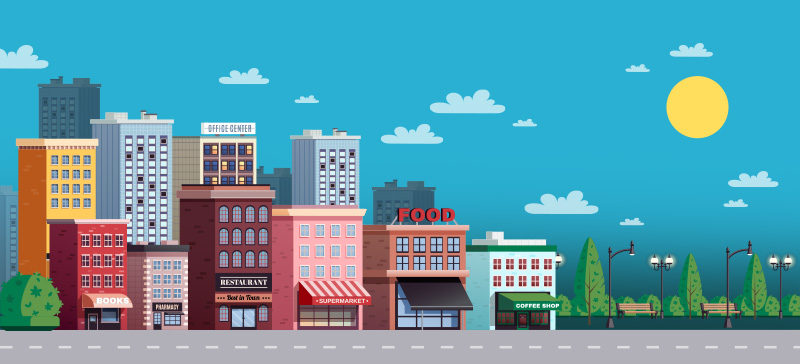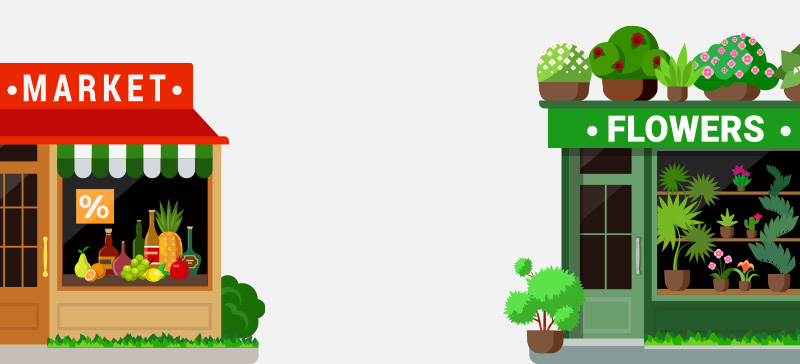The Future of Retail Property
5 minute read
Click here to explore working with Retail Economics for publishing world class thought leadership research like this.
What you can get from this report
- We've identified the top trends that are currently impacting the retail property market.
- Explore trends within the various property types that make up the retail property mix, and tenant mix and occupancy within retail locations.
- Look at trends regarding the future of the high street and how the function of retail spaces might change.
- Explore the impact of online shopping on physical retail spaces and ways in which ecommerce is changing consumer behaviour and expectations.
This report is divided into ten main sections:
• Introduction
• Retail Propery Mix
• Tenant Mix
• Footfall
• Future of the High Street
• Impact of Online Retail
• Technology in Retail Property
• Global Trends & Policy
• Conclusion

Introduction
The retail property market is a critical component of the wider retail industry. It encompasses a diverse range of property types, from traditional high street stores to large shopping centers, to retail parks. The success of the retail property market is influenced numerous factors including consumer behaviour, economic conditions, and technological advancements among others.
This report provides a summary of the key trends that are currently impacting the retail property market, and comment on some of their implications for property owners, retailers, and consumers alike.
It will explore trends within the various property types that make up the retail property mix, and tenant mix and occupancy within retail locations. It also looks at trends regarding the future of the high street and how the function of retail spaces might change, as the importance of experiences plays a more pivotal role. Another crucial aspect of the report will be an exploration of the impact of online shopping on physical retail spaces and ways in which e-commerce is changing consumer behaviour and expectations.
Additionally, we discuss the importance of sustainability and ESG goals in the retail property context, and look at trends concerning technology in stores, and how brands’ omnichannel proposition needs to harmonise with bricks and mortar locations.
Finally, we touch upon some global trends that are influencing the retail property in general, and how certain policies are impacting key decisions for property owners.
By highlighting some of the key trends, this report will provide valuable insights for those involved in the retail property market, particularly as we move forward amidst significant disruption characterised by industry restructuring, economic pressures and geopolitical instability. Whether you are a property owner, retailer, or consumer, understanding the forces that are shaping the industry is critical to success in an increasingly competitive marketplace.

Retail Property Mix
The retail property mix refers to the various types of retail properties, including high street stores, shopping malls, retail parks, and popup shops. These properties face different challenges and opportunities in the current retail environment and moving forward. In this section, we explore some of the key trends affecting each of these property types.
High Street Stores
The traditional high street has faced significant challenges in recent years, with declining footfall and increasing vacancy rates. However, there are still opportunities for high street stores to thrive, particularly in areas with high population density and a strong local community. Some of the key trends impacting high street stores include:
Rise of Experiential Retail
High street stores are increasingly using experiential elements to attract customers, such as events, workshops, and interactive displays. The scope for ‘dazzling’ customers in-store if often dependent on store size, however much can be achieved with creative approaches.
The Need for Flexible Leases
High street retailers increasingly require more flexibility in lease terms to adapt to changing market conditions. Many businesses will need financial flexibility to support digital transformation strategies while adapting their propositions in the short in order to meet changing consumer expectations.
Supporting Omnichannel Retail
In most cases, the function of high street stores needs to fully support an omnichannel customer experience. Mixed in-store messaging, pricing, and product mix will dilute a seamless shopping experience causing frustration and impact sales.
Local Shopping Parades
While high street stores in major cities tend to dominate discussions around retail property, shops on local parades in residential areas play a crucial role in the fabric of communities – as evidenced during pandemic times. Often including independent shops, these smaller store formats provide essential goods and services to local residents and foster a sense of community through personalised services and convenience. Some trends impacting local shopping include:
A Strengthened Sense of Community
Small local shops play a vital role in building strong communities in the areas they serve. Many appear to be hosting more events (e.g. workshops), supporting local causes, and engaging with local customers on local issues. By doing so, local shops are fostering a stronger sense of belonging among their customers - this was evidenced particularly during the pandemic, and there will be similar opportunities in the future.
Supporting Omnichannel
More local shops are recognising the significance of omnichannel retailing and are taking steps to support this to remain competitive and relevant. Some are creating their own e-commerce websites (or using third-party platforms). Many local shops are also offering services such as home delivery, curb-side pickup, and click and collect to help drive footfall. This allows customers to shop across multiple channels and touchpoints seamlessly – in a way that includes local shops.
Increased Focus on Personalised Service
At a time where cost of living pressures are squeezing household budgets, small local shops (typically charging more for goods and services versus other locations) need to increase their focus on personalised service to bolster footfall and retain customers. They already have an advantage over larger retailers where they can quickly build strong relationships with their customers, and hence are doubling down on efforts in this area.
These are only a few of the trends analysed in this section, other trends include:
• Shopping Malls -
The rise of mixed-use developments
The use of technology
The Importance of Community
• Retail Parks -
The Need to Enhance Experiences
Take Sustainability Seriously
Health and Wellness

Tenant Mix
Effective tenant mix is crucial for retail property owners to optimize their revenue streams and sustain long-term profitability. The right mix of tenants creates a cohesive and attractive shopping experience for consumers, which drives footfall and sales for retailers. Furthermore, strategic tenant mix ensures that retail property owners have a diversified portfolio of tenants that can mitigate the risk of vacancy and potential revenue loss. Therefore, it’s vital that retail property owners remain vigilant in understanding consumer trends and preferences to curate the best possible tenant mix to enhance the overall shopping experience and maintain a competitive edge within the marketplace.
Onminchannel Reflected in Tenant Mix
As retailer’s omnichannel propositions become more sophisticated, physical retail needs to reflect this. Property investors and landowners need to consider how they can integrate online and offline shopping experiences, both for the venue and to support the tenant mix. This could include encouraging click-and-collect, providing free Wi-Fi, and creating interactive in-store/in-venue displays that allow shoppers to access relevant or personalised information to support sales. Here, property owners should look for tenants with a strong online and social media presence who can leverage their digital channels to drive footfall onto their properties.
Health and Wellness
Consumers are increasingly prioritising health and wellness, in part, accelerated by the impact of the pandemic. This is reflected in the types of tenants in demand. In addition to traditional health and fitness businesses, the industry is seeing a rise in wellness-focused retailers such as beauty and skincare brands, natural and organic food stores, and health supplement retailers.
These are only a few of the trends analysed in this section, become a Retail Property member now to access the full report